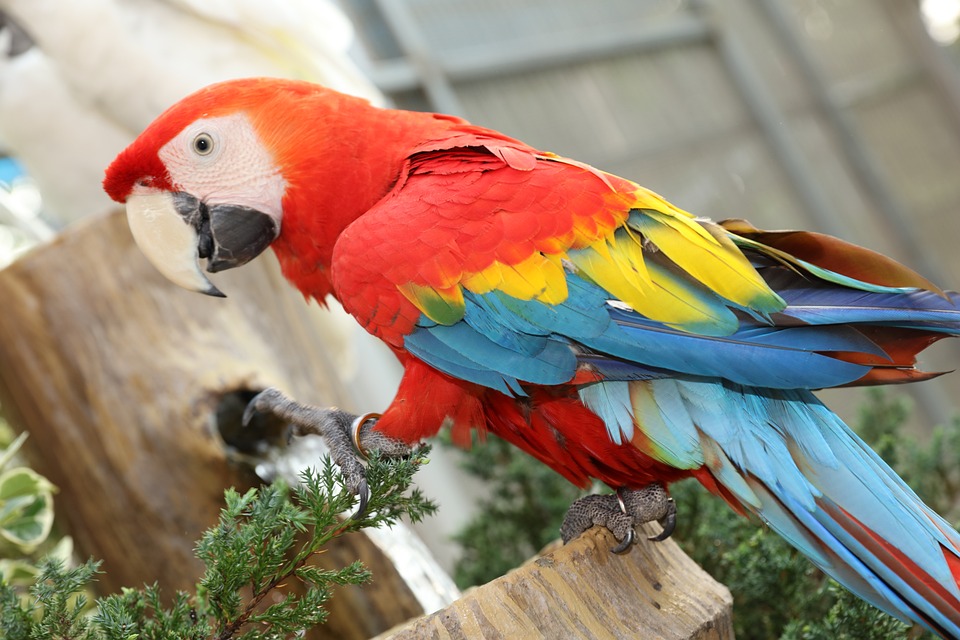Parrots are fascinating and intelligent creatures that can make wonderful companions for children. However, it’s important to understand their behavior and implement effective training techniques to ensure safe and positive interactions. In this article, we will explore how positive reinforcement can be used to reinforce gentle interactions between parrots and children.
**I. Understanding Parrot Behavior**
1.1 Parrot’s Natural Instincts: Parrots have natural instincts that can sometimes lead to aggressive or unpredictable behavior. Understanding these instincts, such as territoriality or the desire to protect their flock, can help us better anticipate and prevent any potential issues.
1.2 Body Language and Communication: Parrots communicate through body language, and it’s crucial to learn to interpret their cues. Signs of distress or discomfort, such as fluffed feathers, dilated pupils, or aggressive posturing, should be taken seriously and addressed promptly.
1.3 Establishing Trust and Bonding: Building a strong bond of trust with your parrot is essential for fostering gentle interactions. Spend time with your parrot, engage in positive activities, and create a safe and comfortable environment to strengthen your relationship.
**II. Positive Reinforcement Techniques**
2.1 Rewards and Treats: Positive reinforcement involves rewarding desired behaviors with treats, praise, or play. Offering treats when your parrot displays gentle interactions with children reinforces the behavior and encourages them to continue behaving in a positive manner.
2.2 Clicker Training: Clicker training is a popular technique used to reinforce desired behaviors. By associating a distinct click sound with a reward, you can effectively communicate to your parrot when they have performed the desired action.
2.3 Encouraging Gentle Interactions: Whenever your parrot interacts gently with children, provide immediate positive reinforcement. This can include verbal praise, treats, or a favorite toy. Consistently rewarding gentle interactions will help your parrot understand that this behavior is desirable.
2.4 Consistency and Patience: Consistency is key when using positive reinforcement. Be patient and consistent in rewarding positive behavior, and avoid punishing or scolding your parrot for unwanted behavior. With time and repetition, your parrot will learn what is expected of them.
**III. Reinforcing Gentle Interactions with Children**
3.1 Supervised Encounters: Always supervise interactions between children and parrots to ensure safety for both parties. This allows you to intervene if any signs of aggression or discomfort arise.
3.2 Teaching Respectful Behavior: Teach children how to interact respectfully with parrots. This includes avoiding sudden movements, loud noises, or pulling on feathers. Educate them on the importance of treating the parrot gently and with kindness.
3.3 Encouraging Calm Interactions: Encourage calm interactions between children and parrots by creating a peaceful environment. Avoid introducing any stressful or overwhelming stimuli that may trigger unwanted behavior.
3.4 Building a Positive Association: Help your parrot associate children with positive experiences by incorporating them into enjoyable activities such as feeding, training, or play. This will help your parrot view children as positive and trustworthy companions.
**IV. Frequently Asked Questions (FAQs)**
4.1 How long does it take for a parrot to learn gentle interactions?
The time it takes for a parrot to learn gentle interactions can vary depending on the individual bird and their previous experiences. Consistency and patience are key factors in the training process.
4.2 Can any parrot breed be trained for gentle interactions?
Yes, any parrot breed can be trained for gentle interactions. However, it’s important to consider the specific needs and temperament of each breed and provide appropriate training and socialization.
4.3 What if the parrot shows signs of aggression towards children?
If a parrot shows signs of aggression towards children, it’s important to assess the situation and consult with a professional trainer or avian behaviorist. They can provide guidance and help address any underlying issues causing the aggression.
4.4 Is it safe for children to handle parrots alone?
It is generally recommended that children are supervised when interacting with parrots to ensure their safety. However, as children become more experienced and mature, they can handle parrots under appropriate supervision and guidance.
4.5 How can positive reinforcement help in addressing unwanted behavior?
Positive reinforcement can be used to redirect and address unwanted behavior by rewarding alternative, desirable behaviors. Instead of focusing on punishing or scolding the parrot for unwanted behavior, redirect their attention towards positive actions and reinforce those behaviors.
**Conclusion:**
By understanding parrot behavior and employing positive reinforcement techniques, we can create a safe and enjoyable environment for both parrots and children. Consistency, patience, and supervision are key factors in ensuring gentle interactions. Remember to always prioritize the well-being and safety of both the parrot and the child.









